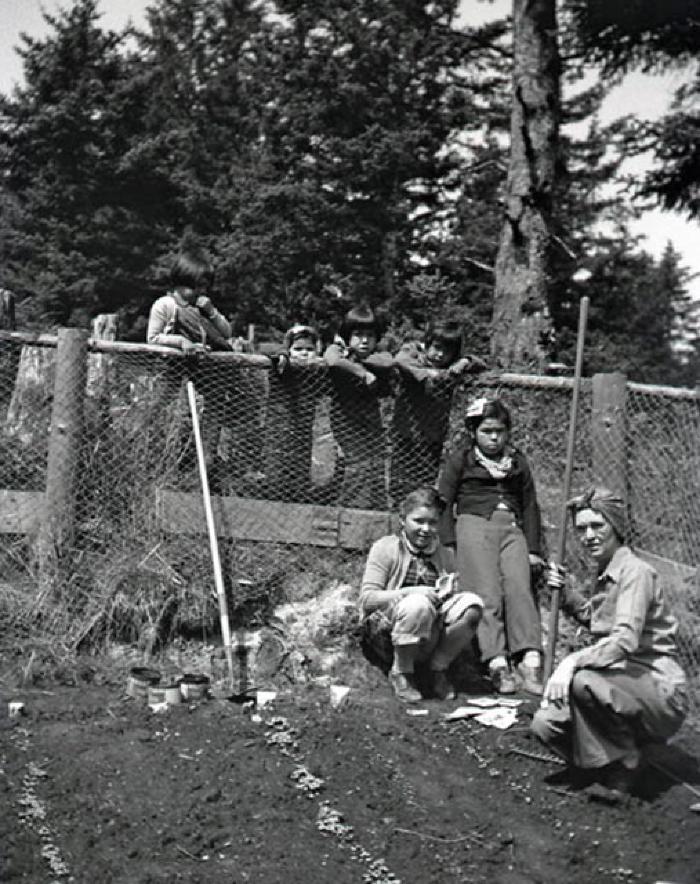Garden — AkaRautaq (N), Uk’uRutaq, Uk’ulutaq, Naut’staarwik

Although Alutiiq people have long enjoyed wild fruits and vegetables, gardening is a recent pursuit. Russian colonists were the first to attempt cultivation in Kodiak’s fertile soil, growing grains and vegetables. Barley crops fared well, but wheat failed to ripen in the cool, wet summer months. Vegetable crops were more successful. As early as 1790, Russian gardens produced potatoes and cabbages. By the mid-1800s some village residents were raising potatoes commercially for Kodiak Monks, especially on Afognak Island.
Gardening gradually became an Alutiiq pursuit. By the early twentieth century, many families tended large vegetable plots to supplement their harvest of wild food and store-bought groceries. Potatoes were the most important crop, although gardeners also grew lettuce, cabbage, carrots, rutabagas, beets, turnips, and radishes.
Gardens were often established in open, sunny places, not necessarily adjacent to their owner’s home. For example, Ouzinkie residents gardened in Sourdough Flats, on Cat Island, and on Garden Point. Similarly, Kodiak’s Potato Patch Lake takes its name from the many gardens that once surrounded its shores. Families worked together to develop their gardens. Men prepared the earth by hoeing and tilling. Women and children tended the plants: weeding, watering, and fertilizing with buckets of kelp. Because of their rich soil, old Alutiiq village sites were favored locations for gardens.
Families stored their garden produce in cool, dark cellars sometimes called potato houses. Dug into the ground, these cellars were lined with grass and accessed with a ladder. The grass provided insulation for the vegetables that were layered in the hole.
